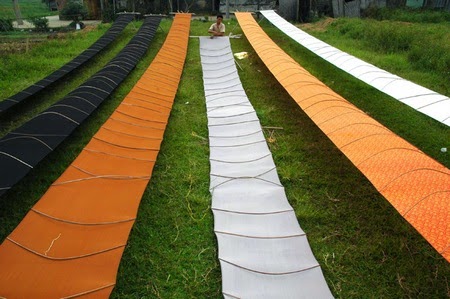A legend tells that in the autumn of a thousand years ago, there was a torrential rain accompanied by severe winds in Vong Village, on the outskirts of present-day Hanoi . At that time, the paddy was just about to ripen and the storm threatened a big loss. The villagers had to collect and dry the young rice as alternative food to avoid starvation.
Unexpectedly, the product had a such a distinct flavour and fragrance that the villagers repeated the process in later years. As a result of the fame of the young rice, this kind of food was brought to other places in the area. Then, it was much sought after by connoisseurs and was one of the village's tributes to the King of the Ly Dynasty (11th -13th century). In Vietnamese, it is called com.
Com is made from young glutinous rice, when the rice begins to ripen and still contains milk and fragrance. The village's traditional renowned craft of making com is still well preserved and developed, even with the advance of technology. The local farming industry does not supply enough rice for com; thus during the season, many villagers have to go to other framing areas near the capital to buy young rice. First, the rice is the original green colour.
To produce a kind of soft com, the rice must be pounded before the most important stage of drying in a large iron pan over a wood fire. The pounding and drying techniques are the know-how that is often kept within the household, never to be transferred to daughters. Artisans of this trade know how long the pounding and drying should last, the frequency of each pounding, how the heat of the fire should be adjusted, and the techniques of choosing good rice and good firewood. Though the village is not as busy with this activity as in the past, you still hear the sound of the pounding and smell the distinctive fragrance of com during the daytime. Pounding is not practiced during the night, so as not to interrupt people's sleep.
The finished product which must be soft, sweet and fragrant, then finds its way to customers in bamboo woven baskets covered with lotus leaves to keep its moisture and to lend the com the fragrance of the flower. The fragrance of com and lotus, when merged, is too attractive to resist.
 RSS Feed
RSS Feed Twitter
Twitter 21:46
21:46
 Hoang Jeny
Hoang Jeny


























